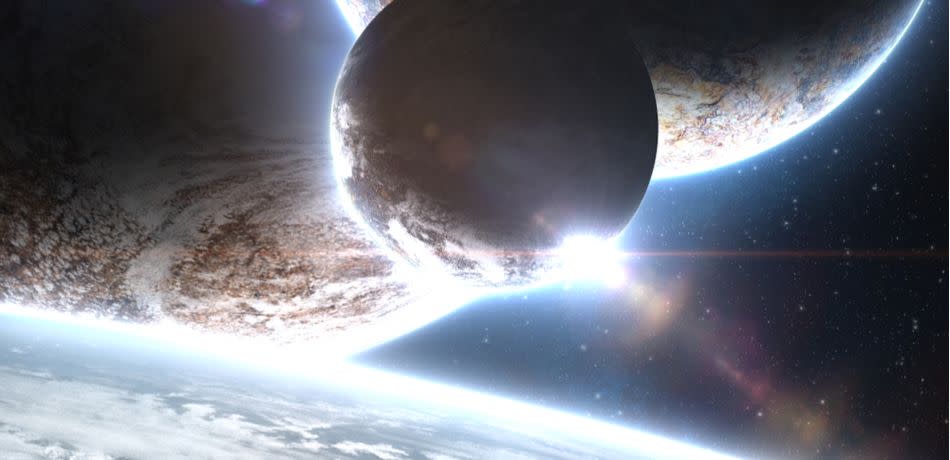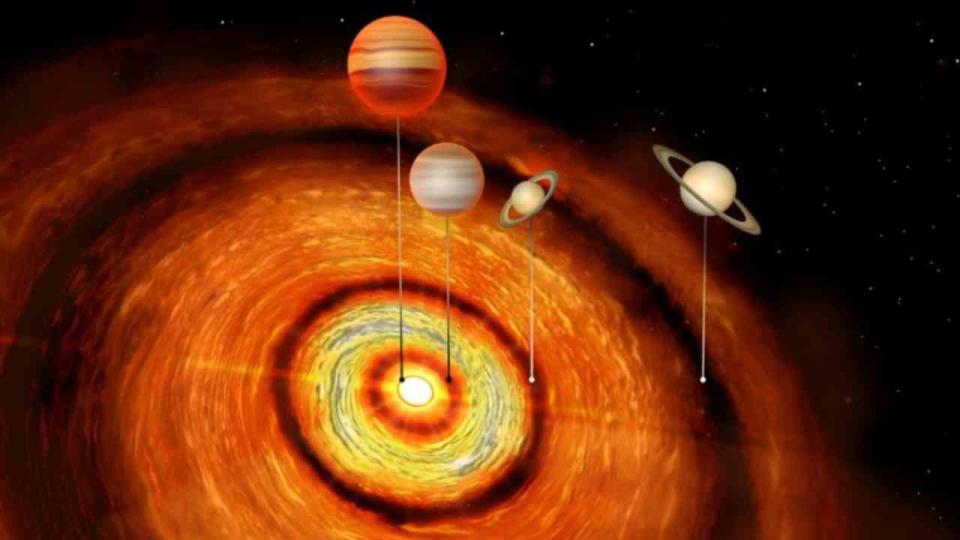Mysterious giant planets ‘which shouldn’t be there’ spotted around young star

Researchers have spotted a star with four huge Saturn and Jupiter-sized planets in orbit around it – the first time such huge planets have been spotted in a young system.
To add to the puzzle, the planets orbits are also unique – the outermost is a thousand times further from the star than the innermost, the Cambridge University researchers say.
The star is just two million years old – a ‘toddler’ in astronomical terms – and is surrounded by a huge disc of dust and ice where planets form.
Astronomers had already spotted a ‘hot Jupiter’ near the star, a puzzling sort of planet which are often thought to be too close to their parent stars to have formed in situ.

The researchers used the Atacama Large Millimeter/submillimeter Array (ALMA) to spot ‘gaps’ in the disc – probably caused by three more huge planets.
The star, CI Tau, is located about 500 light-years away in a highly-productive stellar ‘nursery’ region of the galaxy.
The two outer planets are about the mass of Saturn, while the two inner planets are respectively around one and 10 times the mass of Jupiter.
READ MORE FROM YAHOO NEWS UK:
The worst British railway stations for delays have been revealed
Suspected drug-driver arrested after his car was stopped on motorway with only three tyres
Theresa May says EU demanding ‘backstop to the backstop’ to resolve Brexit talks
Jurors shown image of ’fanatical neo-Nazi terrorist posing in KKK robes with his newborn baby’
British restaurant owner ‘shot dead by hunters’ while biking in the French Alps
The discovery raises many questions for astronomers. Around 1% of stars host hot Jupiters, but most of the known hot Jupiters are hundreds of times older than CI Tau.
Professor Cathie Clarke from Cambridge’s Institute of Astronomy said the find raises many questions about the system, saying, ‘Planet formation models tend to focus on being able to make the types of planets that have been observed already, so new discoveries don’t necessarily fit the models.
‘Saturn mass planets are supposed to form by first accumulating a solid core and then pulling in a layer of gas on top, but these processes are supposed to be very slow at large distances from the star. Most models will struggle to make planets of this mass at this distance.
‘It is currently impossible to say whether the extreme planetary architecture seen in CI Tau is common in hot Jupiter systems because the way that these sibling planets were detected – through their effect on the protoplanetary disc – would not work in older systems which no longer have a protoplanetary disc.’
According to the researchers, it is also unclear whether the sibling planets played a role in driving the innermost planet into its ultra-close orbit, and whether this is a mechanism that works in making hot Jupiters in general.
A further mystery is how the outer two planets formed at all.

 Yahoo News
Yahoo News 

